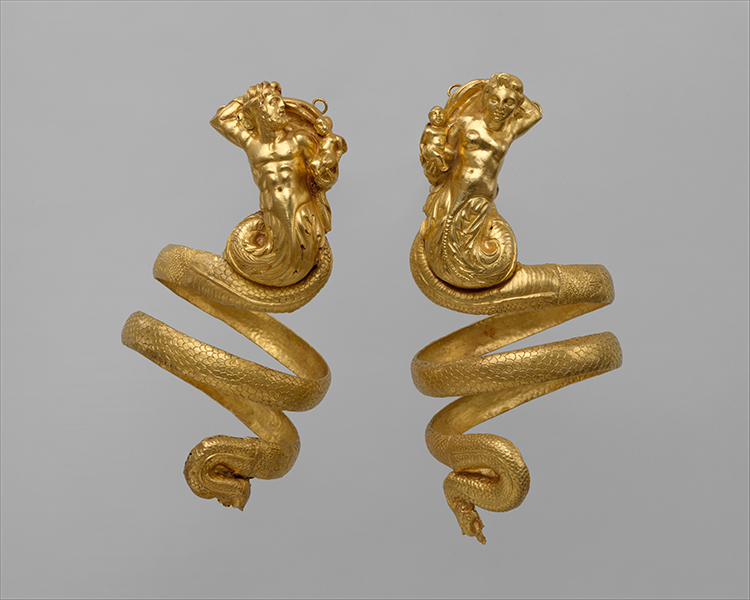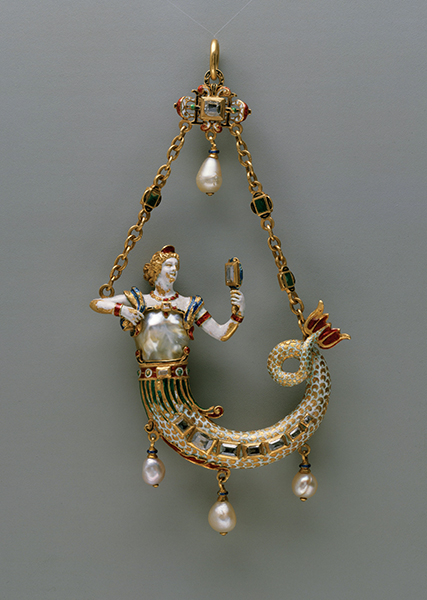For creatures that are inextricably bound to what novelist Henry James called “the tideless deep,” mermaids — and mermen — are having another moment on terra firma.
“The Shape of Water,” Guillermo del Toro’s film about an isolated young woman’s affair with a merman destined for lab experiments, took home four Oscars at the Academy Awards last month, including Best Picture and Best Director for del Toro.
“Siren” — the eco-thriller about the proverbial mystery girl who arrives in a coastal town and is, of course, anything but an everyday woman — has just started streaming on the site Freeform.

On a lighter note, the 36th annual Mermaid Parade is set for June 16 in Brooklyn, with mermaids and mermen of all shapes and sizes — not to mention states of dress and undress — shimmying down Surf Avenue, around Luna Park and onto the Coney Island boardwalk in an event that is at once family-friendly and erotic.
These are reminders that mermaids and mermen capture a fear of and longing for the other that reflects not only our own misfit, hybrid status but our very humanity. For it is the conceit of many stories of otherworldly creatures that they wish to join the human race and are in some ways more human than ourselves.
This ambiguity has been the mermaid’s siren call across cultures since she first appeared in ancient Assyria in the Middle East around 1,000 B.C. in the guise of Atargatis, mother of the queen Semiramis, who accidentally killed her lover and, out of shame, jumped in a lake to transform herself into a fish. But nothing could conceal her human beauty and so the enticing hybrid emerged — half-fish, half-woman. (Sometimes, the aquatic half was a fish head, which was less than enticing — as a gruff sea captain discovers in “Lindemann’s Catch,” an episode of the 1970s TV series “Night Gallery” in which he wishes for a captive mermaid to have legs and gets his wish in the worst way.)
Mermaids are sometimes conflated with the sirens of Greek mythology — bird-women who beckoned sailors to their deaths with their irresistible singing. So powerful was it that in Homer’s “The Odyssey,” Odysseus had himself lashed to the mast of his ship so he could revel in it without succumbing to its lethal lure. It’s a scene depicted by artists like the 19th-century Pre-Raphaelite painter J.W. Waterhouse, a man in love with fatalistic images of women and water. (To complicate matters further, there is a rare, usually fatal congenital disorder called sirenomelia, or “mermaid syndrome,” in which a child is born with the legs fused together. It is named for the order of mammals, sirenia, that includes manatees.)
When it comes to mermaids, we, like Odysseus, want to have our siren song and preserve our sanity, too. The mermaid is that enchanting but, early on in lore, not so nice. Alexander the Great’s half-sister, Thessalonike, for whom the Greek city is named, was said to have been a mermaid. When she asked sailors the question, “Does Alexander live?” their answer better have been “Alexander lives and reigns” or she’d stir up the Aegean Sea against them.
It wasn’t until the 19th century that the mermaid really became a creature of compassion. In Hans Christian Andersen’s tale “The Little Mermaid” (1837), the title character saves her beloved human prince not once but twice, doubly renouncing her marine identity as well to become a spirit of the air doing good on earth.
This being an Andersen fairy tale, it’s something of a downer. The 1989 Walt Disney version, featuring a score by North Salem composer Alan Menken and the late lyricist Howard Ashman, eliminated the religious aspects of the story, gave it a shot of girl empowerment and added a happily-ever-after on land (unlike the happily-ever-after under the sea that takes place in “Splash,” the 1984 film by director Ron Howard, formerly of Greenwich.)

Mermen haven’t been quite so lucky. From the earliest times, they have appeared as old, bearded, unattractive and decidedly unpleasant, with little of the tantalizing ambiguity and ambivalence toward humanity of their female counterparts. (What a surprise: They, like mermaids, were created by heterosexual men.)
There have been exceptions: Triton — the messenger son of the Greek sea god Poseidon and his consort, Amphitrite — may be bearded, but he has washboard abs. Aquaman, who first appeared in 1941, is hunky in the manner of other DC Comics heroes (Superman, Batman). In the 1977-78 TV series “Man From Atlantis,” the title character was played by Patrick Duffy in his pre-“Dallas”/Bobby Ewing days. And in the post-apocalyptic “Waterworld” (1995), Kevin Costner is an amphibious antihero known as The Mariner.
But the Creature in “Creature From the Black Lagoon” (1954)? Eew — forget it (although he was played in a scaly suit underwater by the handsome stuntman Ricou Browning).
In our post-feminist, LGBTQ era, the merman has been transformed. He’s the lonely Raef, whose love for the dashing Lord Haverford leads him to a rakish pirate and an experience he could not have imagined in Kay Berrisford’s “The Merman and the Barbarian Pirate” (Less Than Three Press).
And in “The Shape of Water,” which director del Toro says was inspired in part by “Creature From the Black Lagoon,” he is even more vulnerable, a creature (Doug Jones) destined for vivisection in a Cold War-era American government lab where he is rescued by Elisa Esposito (Sally Hawkins), a mute janitor with scars on her neck who has fallen in love with him.
Like her equally voiceless soul sister, The Little Mermaid, Elisa, too, exchanges her identity for a greater, perhaps truer one to save her beloved.
Or does she? Might those scars on her neck merely be the remnants of gills?
Perhaps Elisa doesn’t so much bring the mermaid full circle as she does herself in a timely fish tale about taking the plunge to embrace the Other.




